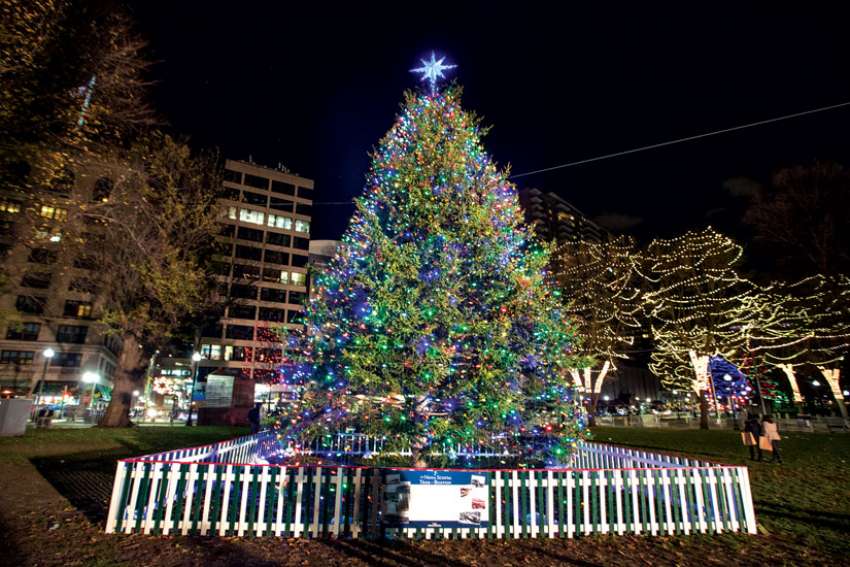The 14-metre white spruce, selected from crown land, was made the city’s official Christmas tree in a lavish lighting ceremony on Dec. 1 at Boston Common. Since 1971, Nova Scotia has been sending a tree to its U.S. Atlantic neighbour as a thank-you for their help after the infamous 1917 Halifax Explosion.
“With the Tree for Boston obviously the history of why we do it is pretty significant and we don’t want that to be forgotten,” said Tim Whynot, manager of stewardship and outreach for the Department of Natural Resources and one of the officials who selects the tree.
This is the first year the ceremonial tree has been selected from the Cape Breton part of the province, adding yet another layer to the Boston Tree story that grew out one of the most destructive events in Canadian history.
On the morning of Dec. 6, 1917 in Halifax Harbour, the SS Mont-Blanc, a French munitions ship that had been packed with highly volatile explosives from New York, collided at low speed with the SS Imo. A resulting fire on board the French ship rapidly grew out of control and ignited the cargo, causing the biggest man-made explosion prior to the development of nuclear weapons, as powerful as about 2.9 kilotons of TNT.
The explosions killed 2,000, injured another 9,000 and levelled much of the city’s industrial sector.
Authorities in Boston learned of the devastation in Halifax by telegraph and quickly began organizing their relief effort.
According to the government website, Halifax sent a Christmas tree to Boston as a gesture of gratitude on the first anniversary of the tragedy. In 1971, the gift was revived on an annual basis by some Nova Scotia businesses before the province took on the project.
Last year, the province spent $242,000 on the program, between transportation (for the tree and politicians), entertainment at the cutting and lighting ceremonies, and TV promotional broadcasts.
Nova Scotia Premier Stephen McNeil considers it money well spent in terms of marketing the province. “(It) gives us a chance to showcase our beautiful part of the world to a global community,” he said at the official send-off in Halifax as the tree began its 1,100-km journey to Boston on a flatbed truck.
Whynot is a strong believer in the Tree for Boston initiative.
“We all understand the importance and significance of it.” said Whynot, who was put in charge of picking the annual present five years ago. “It is the most high profile project that I’m involved with. It is a significant responsibility and we don’t want to send a tree to Boston that is not suitable so we certainly make every effort to get the best tree that we can.”
To assist Whynot in his annual search for the perfect tree, members of the public are encouraged to send in their suggestions via the province’s website (novascotia.ca/treeforboston).


